An oak sapling growing along our driveway has an interesting set of galls growing on it. Galls occur on plants when an external agent, typically an insect, causes a plant to grow specialized structures to support the insect’s needs. Many galls common in our area are produced when tiny species of wasps (appropriately called “gall wasps”) introduce a fertilized egg into the tissue of the plant. Substances produced by the developing larva cause a tumor-like growth called a gall. After larval development is complete, a wasp emerges from the gall having been nourished and protected by the plant tissue that forms the gall.
Oak trees harbor many sorts of galls. The galls featured in this post were growing on a White Oak (Quercus alba) growing in the woods along our driveway. This type of gall only grows at the nodes of an oak branch; none were found on any of the internodes (nodes are the places on plants where the leaves or branches grow out. Internodes are the areas of a branch or stem between the nodes).
An enlarged view of one of the galls in shown in the photograph above. This is a very hard, woody structure which would clearly protect the larva inside from many predators. The gall is about one inch in diameter.
I cut one of the galls open and found a developing insect larva inside as I expected. I am not sure just what species of insect this is, but it is probably some sort of gall wasp.
There were a series of galls at the nodes of the oak branch, and they were progressively older toward the base of the branch. I noticed that one of the basal galls seemed relatively less dense, and it had a hole in one side. I assumed the insect producing the gall had matured and left the gall through the hole. When I cut this gall apart, however, I found it was inhabited by a colony of ants. I presume the ants had modified the gall for their own use, perhaps enlarging the interior somewhat.
When closely inspected, various stages in the ant life cycle could be seen. Some of the very tiny workers are outside. A winged male can be seen on the lower outside part of the gall. Larvae in various stages of development are also present.
A closer look reveals several winged males and the striped abdomen of one of the queens. This species of ant contains more than one queen per colony.
I am no ant expert, but I think this is a species of Temnothorax, perhaps T. curvispinosus. The gall would seem to provide a dry, strong, and relatively easily defended home. This species is also found in other shelters, such as acorns or cavities in wood.

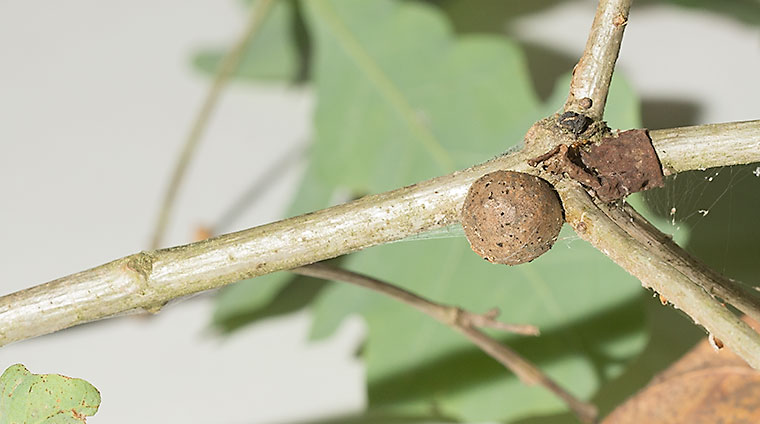
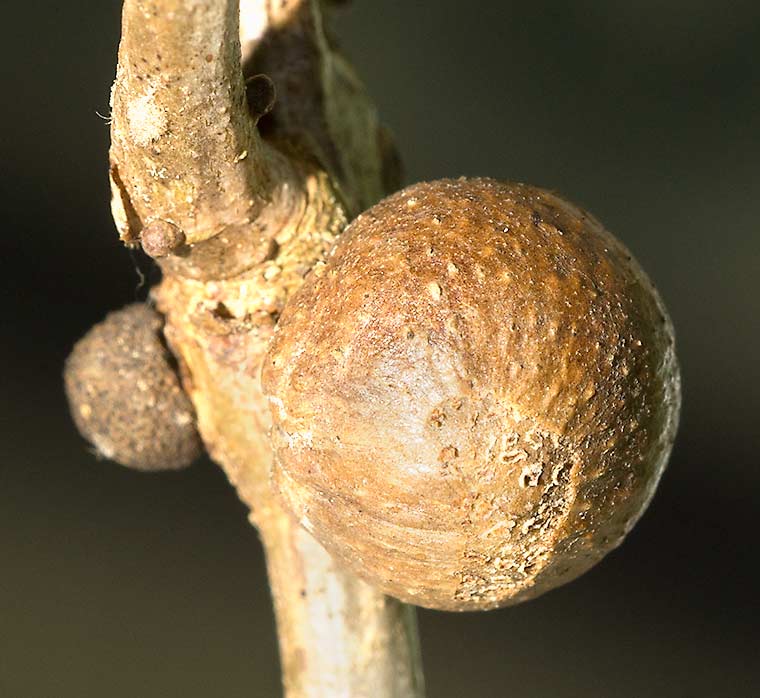
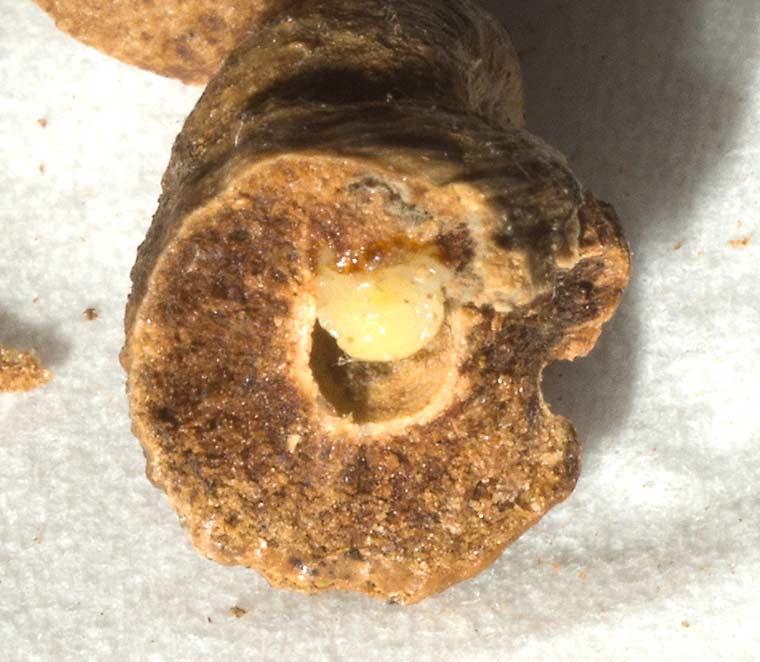
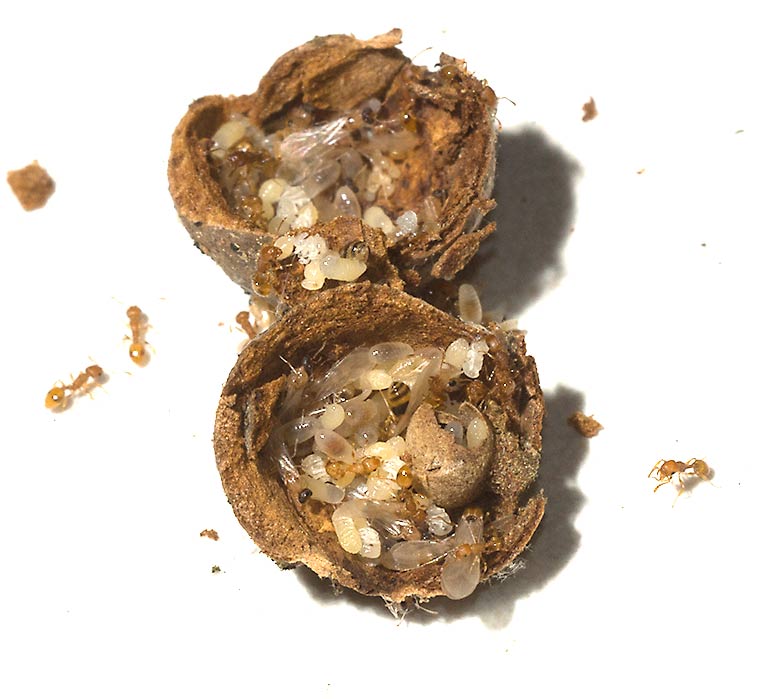
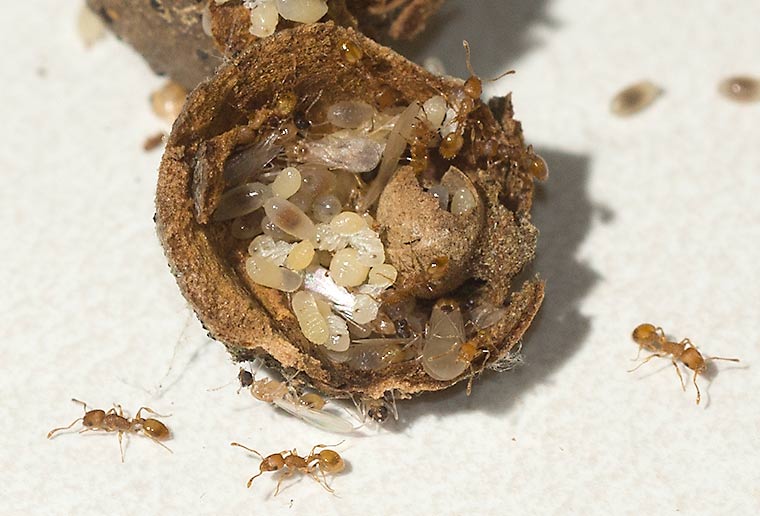
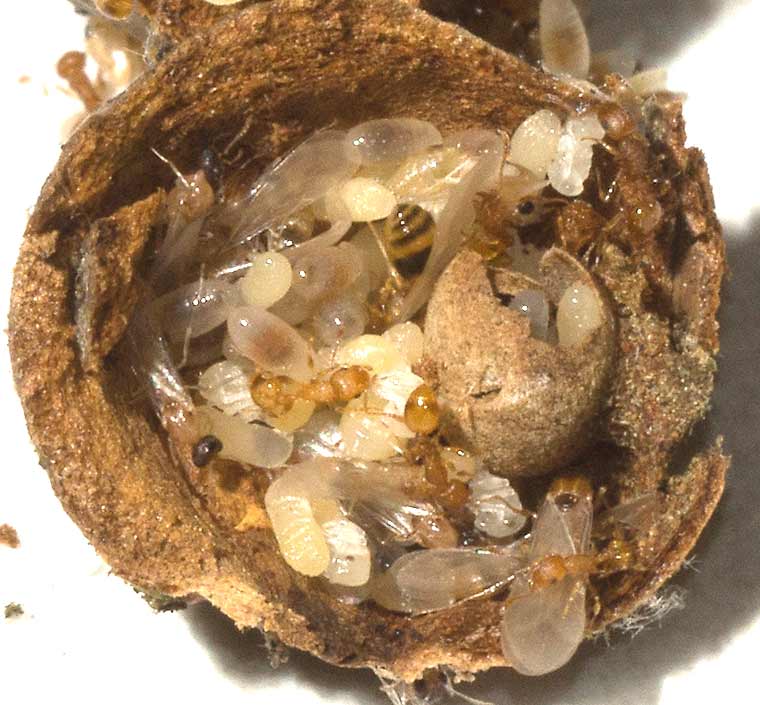
Just found one of these earlier today, but husk only and devoid of any interesting contents…
Wow!! Had no idea!!
What an incredible picture. I have seen gals all my life, but never knew why they are there.